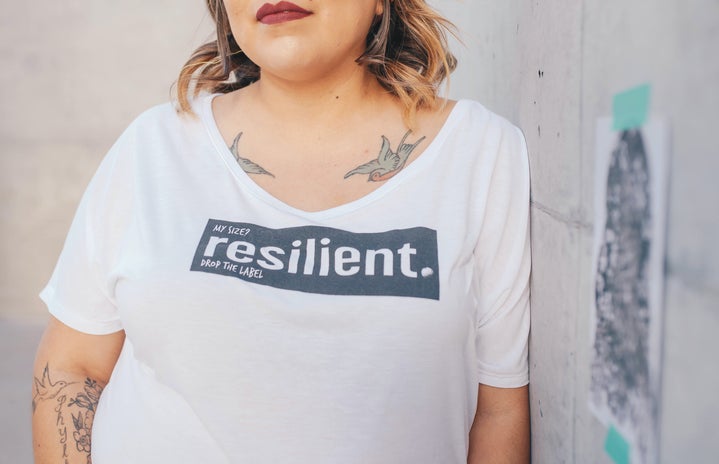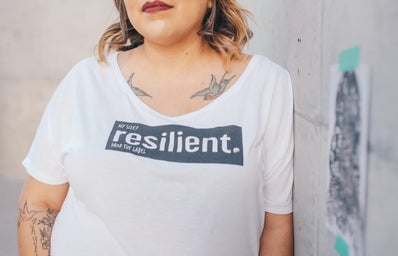Although identifying as a feminist is a big part of the lives of many college women, it wasn’t always that way. Most of us had probably never heard the words “feminist” or “feminism” until the end of middle school or the beginning of high school. However, there are still plenty of ways that we were introduced to feminist concepts before we were really introduced to the terminology. They came from movies, TV shows, books, and music, and there are plenty of them that we still love today.
1. The Cheetah Girls
Disney Channel’s The Cheetah Girls enthralled our young selves with the group’s matching track suits, catchy lyrics, and dreams of fame. However, there was definitely more to this 2003 film than fashion and music. It not only had four WOC as the protagonists, but it also talked about class. Dorinda, one of the four members of the group, is discovered to be one of ten foster children living a much less economically advantaged lifestyle than the other members of the group. Dorinda is worried about what the other girls will think of her, but she is assured that she’ll be part of their group forever, regardless of her wealth. Mix that storyline with lyrics like “I don’t wanna be like someone waiting/For a handsome prince to come and save me” and “I’d rather rescue myself” from their song “Cinderella,” and you’ve got a feminist masterpiece.
2. Kim Possible
Kim Possible was a true feminist icon in the early 2000s. She reversed the roles typically associated with heroes and heroines, defeating the evil Dr. Drakken while her male sidekick, Ron Stoppable, acted as the distraction. Although Kim was a cheerleader, she defied the stereotype of the “airhead” cheerleader, proving herself to be extremely intelligent and resourceful time and time again. Kim defies various other gender stereotypes, including one episode that references a past Halloween when Kim was a cowboy and Ron was a ballerina. The villains of Kim Possible also defy gender stereotypes; Dr. Drakken’s sidekick Shego is usually the one trying to take down Kim in a fight, and she often provides Drakken with ideas on how to improve his plans.
3. Aly & AJ’s “Potential Breakup Song”
To be quite honest, this is a song that I still occasionally play. This hit by a sister duo has a great message about self-worth that is so important for young girls. The song is about a boyfriend who has forgotten about his girlfriend’s birthday, and Aly and AJ understand that girls should never have to put up with a guy who clearly doesn’t care very much. The song is an anthem for self-esteem with lyrics like “You’re not livin’ till you’re livin’/Livin’ with me,” and it gives the boyfriend a choice: “just admit you’re wrong” or face the end of the relationship. And honestly, the all black outfits sported by the girls in the music video probably inspired my current wardrobe.
4. The Powerpuff Girls
Similarly to Kim Possible, Cartoon Network’s The Powerpuff Girls challenged gender stereotypes in a big way. Blossom, Bubbles, and Buttercup dedicate their lives to fighting crime, and they each have their own distinct personalities and flaws, too. Blossom expresses a high intellect and love of organization, but she can also be overly analytical or critical of her sisters. Bubbles is carefree and innocent, but she can also be a bit silly or obnoxious. Buttercup is tough and fearless, but she can also be rude or overly blunt. These protagonists demonstrate that girlhood is multidimensional and that young female protagonists can be both “girly” and intelligent, tough, and optimistic.
5. Zoey 101
Aside from making all of us wish that we went to boarding school in California, Zoey 101 also introduced us to a lot of feminist ideas. In the very first episode, Zoey Brooks challenges a group of boys to a basketball game against her own all-female team. Although Zoey’s team loses by one point, the coach of the (all boys) basketball team offers Zoey and her friend Dana spots on the team, which Zoey happily accepts. Another of Zoey’s friends, Quinn Pensky, is a scientist. In a world where STEM is generally seen as more suited to boys, Quinn created some great “Quinnventions.” Logan Reese, a guy who goes from “frenemy” to friend by the end of the series, is one of the few unlikable characters with a frequently recurring role. Why is he so despicable? He’s outrageously narcissistic, but he also objectifies women many times, which is viewed negatively by both the girls and guys around him.
6. Teen Titans
Aside from being a generally all-around amazing cartoon, Teen Titans did really well with including feminist issues without being super explicit about it. The Teen Titans are a superhero group made up of three guys and two girls, and the girls are never seen as weaker or more delicate than their male counterparts. Each character has to be rescued by the others equally as often as any other character, and in one instance, Raven and Starfire, the two female characters, have to save the male Titans on their own. The best part about that? It wasn’t made into a big deal; the girls weren’t worried about their ability to rescue the boys, and the boys weren’t concerned either. Starfire also shows that women can be both “girly” and tough, and she and Raven both have complex histories that result in emotional issues and character flaws that make them interesting and engaging characters.
7. Hermione Granger
I’m sure it’s no surprise that Hermione Granger made this list. She’s one of the most famous female characters from the literature that defined our generation, and rightly so. She was incredibly smart and had no qualms about displaying her intelligence, volunteering to answer every question in class and teaching others the correct way to perform spells (“it’s leviOsa”). She was also an activist who fought for the rights of the oppressed, starting the Society for the Promotion of Elfish Welfare in an effort to improve the lives of house elves everywhere. Although she and Ron Weasley do end up together, her relationships with Harry and Neville prove that girls and guys are capable of being just friends, too.
These are just a few of the things from our childhood that introduced us to the concept of feminism. There are plenty of others, and new feminist icons are appearing in children’s media all the time. Let’s hope that these new icons inspire a new generation of feminists too.


